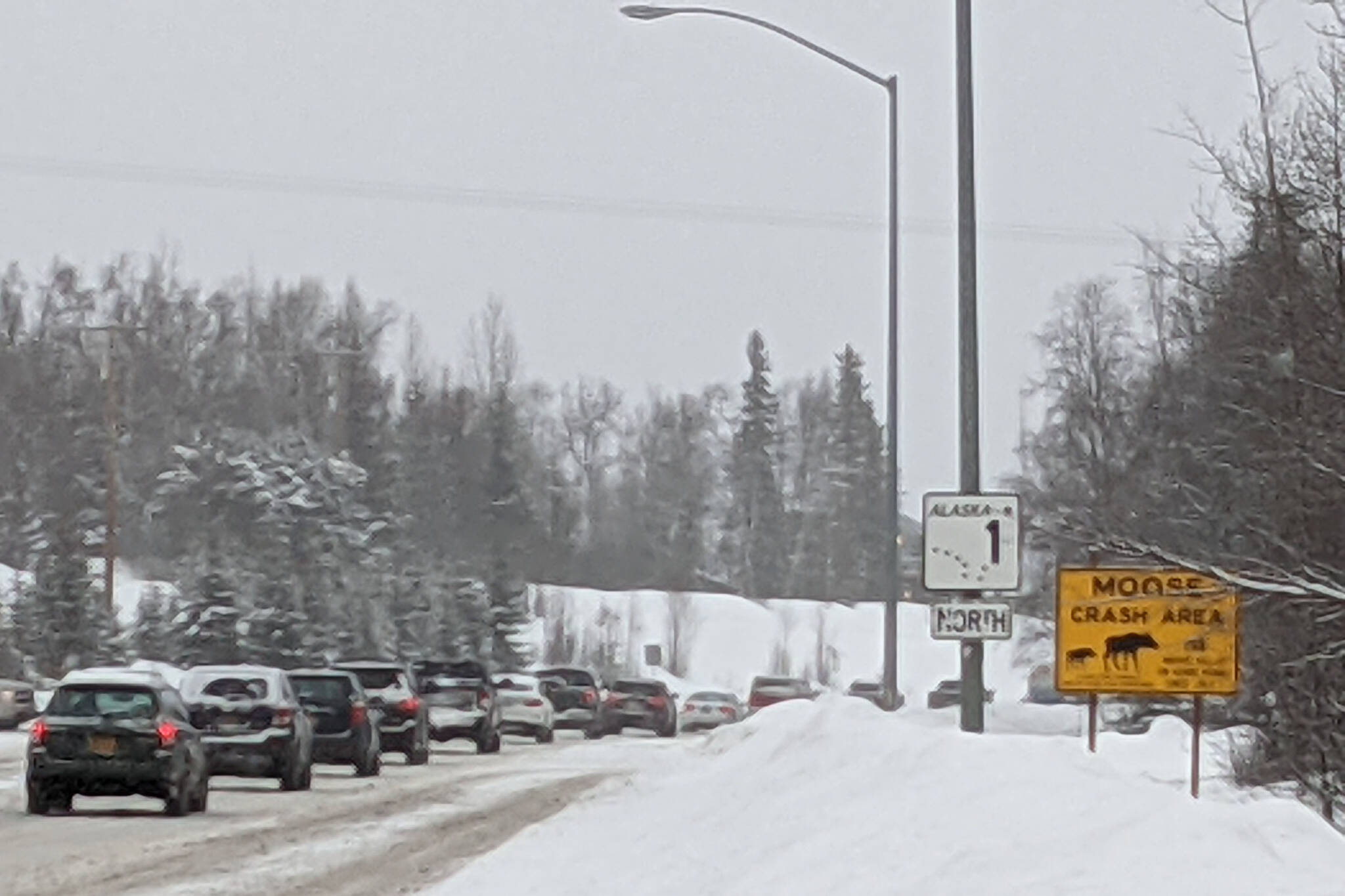The Kenai City Council formalized support for the addition of lighting along parts of the Sterling and Kenai Spur highways through legislation passed during the body’s March 16 meeting.
The resolution, which was presented at the request of the Alaska Department of Transportation and Public Facilities, articulates the City of Kenai’s support for lighting projects along the Kenai Spur Highway within city limits and along the Sterling Highway Safety Corridor, which runs from Sterling to Soldotna.
“Lighting along roadways greatly reduces the risk of vehicle collisions with wildlife and other vehicles at night,” the resolution approved by council members says. “Continuous lighting along the Kenai Spur Highway within the City of Kenai will improve safety for motorist and is in the best interest of the City.”
Kenai City Manager Paul Ostrander wrote in a March 10 memo to council members that DOT notified the City of Kenai that there are potential funding opportunities for lighting at both sites and that supportive legislation would “improve the changes for funding and completion.”
Multiple council members voiced a need for more lighting along both roads.
“That area has definitely got high, you know, moose strikes and turning traffic … which is important, especially when we get into the later seasons where (there’s) a lot more activity down here in the shoulder season,” said Kenai Mayor Brian Gabriel.
Council member Glenese Pettey said she would also like to see lighting in the areas, but requested a yellow — as opposed to white — light to minimize light pollution in the area.
“I know that a lot of the community enjoys the night sky and the constellations and I would like to see that that would be an option for us,” Pettey said.
The Sterling Highway safety corridor refers to a stretch of about 11.5 miles of the Sterling Highway between Sterling and Soldotna — or between Mile 82.5 and 94. It was found eligible for designation by the State of Alaska as a Traffic Safety Corridor in a 2008 safety study of the highway corridor. Among the factors considered for the designation include the rate of fatal and major traffic incidents per mile. The state’s threshold for that rate is 0.857, while the actual rate of that segment of the highway is 1.777.
Among the mitigation options put forth in the safety report are a widening of the highway, the installation of moose fencing or the creation of a no-passing zone. Widening the highway to create a four-lane divided facility with a depressed median, the mitigation plan DOT plans to move forward with, is also described.
The full city council meeting can be viewed on the city’s YouTube channel.
Reach reporter Ashlyn O’Hara at ashlyn.ohara@peninsulaclarion.com.

